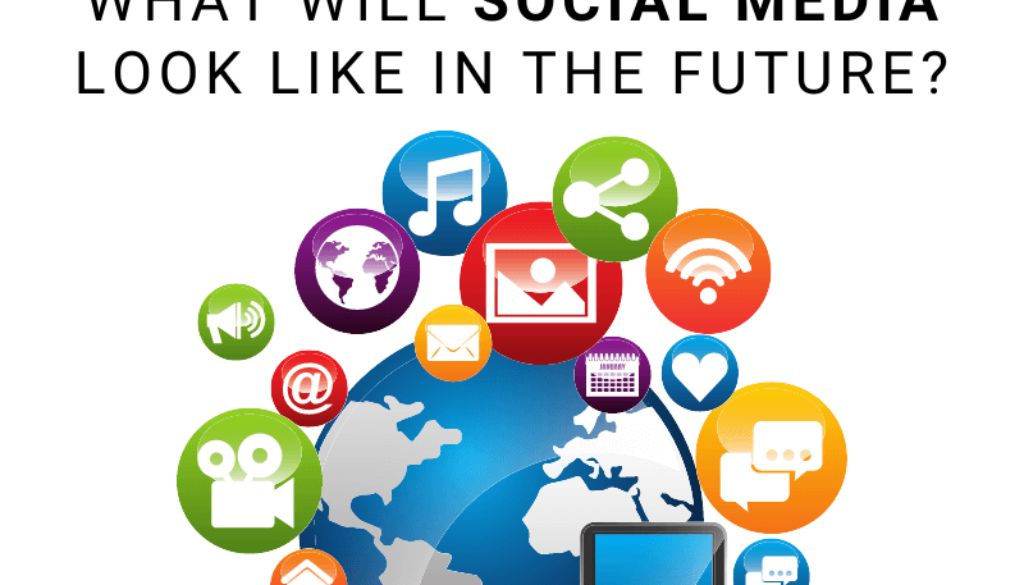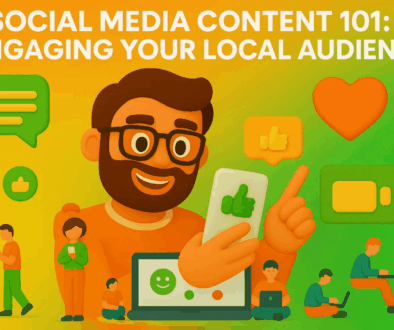What Will Social Media Look Like in the Future?
“Yesterday is history. Tomorrow is a mystery. Today is a gift. That’s why we call it ‘The Present’.” – Eleanor Roosevelt
Knowing the future will always be ambiguous at best. No one can be truly certain. How many times have you read some prediction by an aspiring televangelist about the end of the world or your beloved parent speaking on how so-and-so will do this or that thing because “it’s in their nature”? All of these things are assumptions based on our own limited knowledge and bias. We simply don’t share anything close to an omniscient point of view because the universe is full of infinite possibilities of what could be, but not what will be. Nevertheless, we must have some kind of vision of the future, flawed though it may be, so that we can steer our course in a profitable direction.
Okay, let’s dispense with the existential talk and see if we can portend what the future of social media will look like.
Being social creatures, we humans rightfully crave attention. It is in our survival instincts to band together to accomplish any task. Communication has always been important since the dawn of civilization, and now we have the power to project our influence across the globe with just the flick of a finger. It is understandable to assume that this potency of proliferation will only continue as mobile devices become more compact and powerful.
The Shakeup
With the advent of COVID, many new digital platforms have immerged. The number of people staying at home brought about new opportunities for the digital world. Whilst numerous platforms have arisen, some legacy platforms have been restored.
Many networking questions have been raised, and the answer seems to be dependent on whether the user is a social media first or social media last type. This trend is likely to continue going forward. Networking questions need to be answered, and goals need to be set. Additionally, appropriate resources need to be assessed. Putting the cart before the horse is seldom advised. You should also make sure that your resources are used in a cost-effective manner. Next, you should understand your target audience. Using analytical data will make this process much easier. If these questions aren’t answered clearly, then no investment should be made.
As stated above, networks are ever-changing and new ones are coming into the scene, but never lose focus on the bigger players. When using legacy platforms keep optimization in mind. Be wary of post times. Also, pay attention to the type of content you post. It needs to be geared toward your target audience. Watch where your audience spends their time.
Noticing Trends
An example of a legacy platform that has proven itself flexible to modern behaviors is the number 1 professional social site, LinkedIn. It has adapted to modern users to accommodate current trends. Watching for long-term habits is a great way to gauge your audience.
An example of a modern platform that is a similitude of current and future trends is BeReal. The concept behind BeReal is that the app gives you a 2-minute window to post something about yourself, ideally what is happening to you right now. This idea comes from a trend where posts on other social media platforms seem disingenuous. In this instance, it is hoped that since you only have a 2-minute window to post something it will be spontaneous and “in-the-now”. In a word, the posts will be “authentic”.
Another trend to be conscious of is something called “touch grass”, which I assume is a pun and reference to “touching glass” (i.e. your phone screens). The concept is to take a break from social media, go outside, and touch the grass. We live in a time where mental and emotional health has never been more highly valued, and this app seems to exemplify this trend. It is something to take note of.
Then there is a burgeoning trend called “Shock Jock Social Marketing”. This refers to the change in social media where reporting events is no longer bland and dry but is full of witty and inappropriate humor for shock value. It is a way to capture the attention of the modern audience, showing awareness and relatability.
All and all, the overarching trend of modern content is that of the meta (and no, I am not referring to Facebook). People want to know what is actually happening behind the brand. People want transparency, honesty, and to see the natural human side of things.
Utilize Data & Your Consumers
Listen to the people, but be wary of the writer. There are trolls, but often beneficial data can come from criticism. In the video game world there was the disastrous launch of No Man’s Sky. Sean Murry, owner and founder of Hello Games, the developer of the game, decided to forward all of the criticism the game was getting to his personal device. He used the information and grouped the demographics of the criticism into data sets. From this, he was able to come up with a checklist of things that most people were saying needed improvement. They then tackled each issue in an orderly fashion and even added some things that improved the game that wasn’t being addressed. It is because of this strategy that the game has improved tenfold and is enjoyed by many today. The takeaway from this experience is to listen to your viewers. From this method, we can see where the industry may be heading based on the voice of the people.
Make a special effort to focus on purposeful and personalized content. Modern trends suggest that something that seems genuine and real will garner much more attention than corporate speech will. Remember you are talking to people, not execs. Watch what other platforms are doing, but use this knowledge to help you stand out from the rest. This will draw attention to your brand.
On TikTok there is a hashtag that is trending, a certain side of TikTok called FoodTok. The idea is that creators of all types share their experiences with a certain provider of cooking products. Graza took this trend and asked users to do the same thing for their product line of cooking oil. This strategy was so successful that their product sold out within the first week of January 2022. Graza’s understanding of modern habits helped them to make this astounding feat happen!
A proven tactic that even infomercials use is the “show it in action” method. Show your product doing what it was designed to do. In this way, the consumer can get a visual of the purpose of the product and how it can benefit them.
Going back to social media, use content creators! The good folks on YouTube, TikTok, and others don’t get paid much (if at all) from adverts on their respective socials. Sponsorships are one of the main ways these creators earn their keep. Some will help regardless of the product or service, but creating products or services that are convenient or serve a higher goal will give your creators something to bite into when advertising you on their platform. Treat them well, and you’ll see many returns.
Ask For Help
What seems to be the real future of social media is unbridled, believable, and relatable content. Modern trends show this, so it is safe to assume that will continue for some time. Be wary of the ebb and flow of trends, as they are signs of things to come. If you’d like for your project to have more exposure, come talk to us here at Zellus Marketing. Our specialists put these practices to good use and have a bird’s eye view of social media’s ever-evolving state. With us, your brand will expand, excel, and stand out!
Good hunting!



